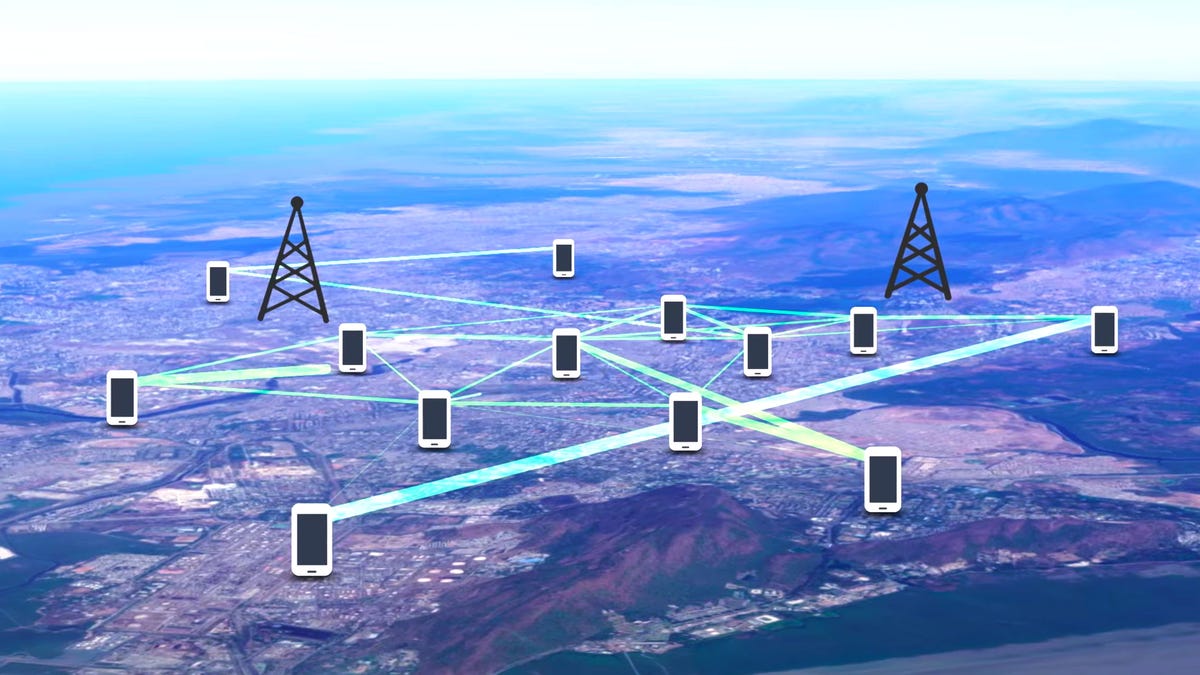Weather app works even when disaster takes out the network
IBM and the Weather Channel have a new app that sends emergency alerts from one phone to another, bypassing overtaxed mobile networks.

Mesh networks connect devices directly to each other, working even if traditional networks fail.
Mobile networks have a hard time handling emergencies that send us all rushing to our phones to get the latest information or reach friends and family. A new Weather Channel app, though, can get the message through even during earthquakes, tornadoes and terrorist attacks when mobile networks can be overwhelmed and may not work.
The Android app, geared specifically for developing countries, uses IBM-developed technology called mesh networking that sends messages directly from one phone to another. The result is that information can propagate even when centralized networks fail.
Using Bluetooth and Wi-Fi networks, the app can send data from phone to phone across distances between 200 to 500 feet, IBM Research staff member Nirmit Desai said. It doesn't add any more battery burden than an ordinary app, and the mesh network can be used without having to reconfigure the phone's network settings.
It's a clever technique that's well suited to regions with subpar networks. But much of the promise of mesh networking remains unfulfilled.
The Weather Channel app, shown here with a Thunderstorm alert in Hindu text, is designed for slow networks.
The One Laptop Per Child (OLPC) effort to bring low-cost Linux-powered computers to developing nations tried using it to improve networking. Google Executive Chairman Eric Schmidt hopes mesh networking will help bypass government censorship. The ZigBee standard for home networking uses it, letting network data hop from one device to another across a home, but most folks haven't heard of it. Perhaps coming mesh features in future Bluetooth short-range networking will catch on.
One of the biggest mesh challenges is achieving a critical mass of network nodes -- in this case, people with phones running the app.
"Having mesh as part of one of the most popular apps helps," Desai said. "The app and the mesh technology have great synergy. Each new download of the app results in availability of a new mesh node. And with each new mesh node, the app is able to relay critical information to more users."
And mesh networks can be used for more than broadcasting alerts. "Once we have a viable mesh, it can carry data for multiple applications, including messaging applications," he said.
Mesh networks also open open up a new security concern. IBM's approach uses digital signatures to ensure information sent on the mesh network is from a trusted device and hadn't been modified.
The Weather Channel is launching the app in emerging markets in Asia, Latin America and Africa. It's a very small app by modern standards -- just 3.2MB -- and is geared to work even on slow, older 2G networks still common in much of the world.
CNET Magazine: Check out a sampling of the stories you'll find in CNET's newsstand edition.
Tech Enabled: CNET chronicles tech's role in providing new kinds of accessibility.

